Hybrid cloud computing is a type of cloud computing that combines the benefits of both private and public clouds. It has emerged as a pivotal strategy for organizations aiming to balance scalability, agility, and control. The hybrid cloud empowers businesses to optimize performance, enhance security, and drive innovation.
This blog explores the current landscape of hybrid cloud computing and its architecture, benefits, and future trends. Let’s learn more about hybrid cloud computing with WeCloudData!
What Is Hybrid Cloud Computing?
A hybrid cloud is a cloud computing environment that blends public cloud platforms, private cloud services, and on-premises resources. With more deployment options and increased flexibility, the hybrid cloud enables enterprises to maximize their current infrastructure, security, and compliance.
A hybrid cloud is particularly beneficial for organizations that require a balance between scalability, control, and cost-efficiency. Organizations using hybrid cloud utilize the public cloud for scalability and cost-efficiency while the private cloud maintains critical workloads on private infrastructure, hence getting the best of both worlds.
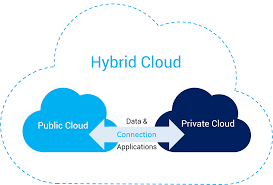
The Evolution of Hybrid Cloud Architecture
Traditional Hybrid Cloud Architecture
Traditional hybrid cloud architecture connects on-premises data centers to public cloud services through APIs or VPNs. This approach allowed organizations to extend their existing infrastructure to the cloud, facilitating scalability and redundancy. Cloud service providers like
IBM Cloud or Microsoft Azure hosts the public cloud environment while the transformation to the cloud is done by utilizing a pre-built hybrid cloud system like Red Hat OpenStack.
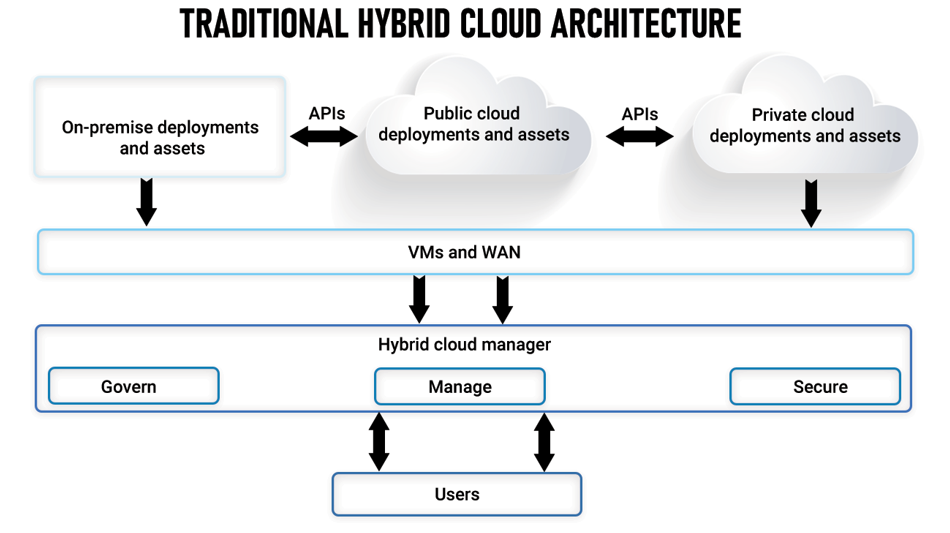
Modern Hybrid Cloud Computing Architecture
The modern architecture of hybrid cloud computing has developed to accommodate more complex and dynamic workloads. It focuses on automating the deployment of workloads for a specific business goal and enabling workload portability across all cloud environments. Key features of modern architecture of hybrid cloud computing include;
Microservices And Containerization
The microservices-based architecture is at the core of the hybrid cloud model. Microservices are smaller, independently deployable application parts that work together as a system. Applications are divided into microservices, and each microservice is operated in a dedicated, separate container. Containers are lightweight packages of software that contain all of the necessary elements to run in any environment. This architecture improves scalability and portability in various cloud settings.
AI-Driven Resource Allocation
This approach utilizes artificial intelligence to optimize resource allocation, guaranteeing cost savings and effective task management.
Unified Management Platforms
Tools that provide a single pane of glass for managing resources, workloads, and services across multiple cloud platforms.
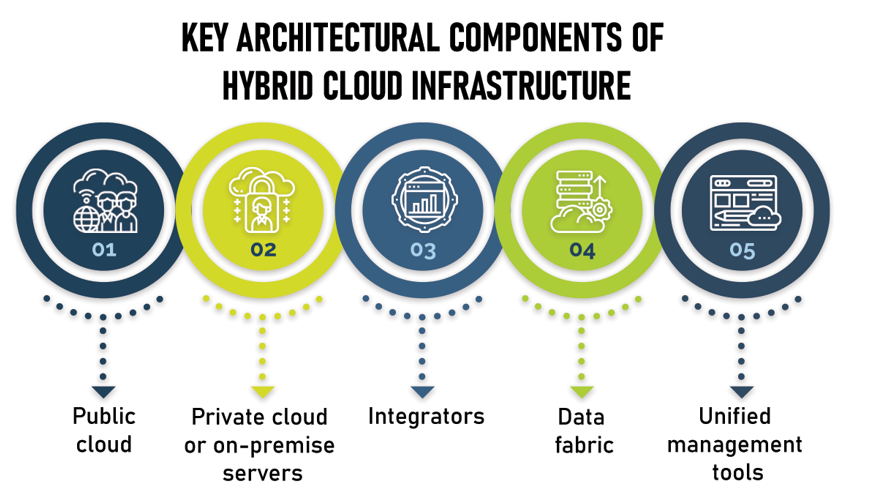
Advantages of Hybrid Cloud
The hybrid cloud offers multiple advantages, some of which are listed below;
Flexibility: Businesses can balance cost and performance by selecting the best environment for each task.
Scalability: Peak loads can be managed by using public cloud resources, guaranteeing continuous service.
Security and Compliance: Sensitive data can be stored on-site or in private clouds to comply with legal requirements.
Cost-effectiveness: Companies can cut capital costs by using public cloud services for non-critical tasks.
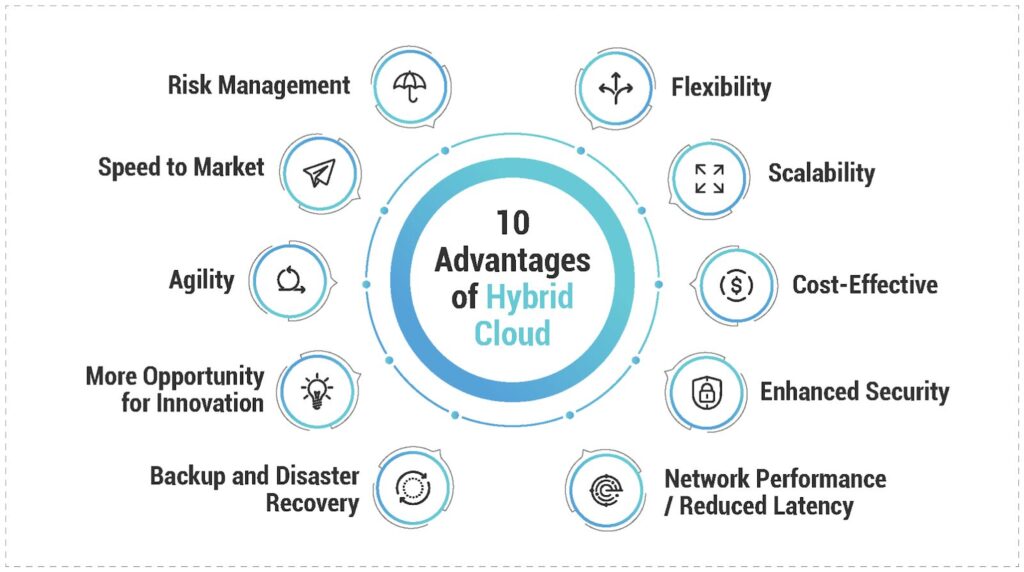
Hybrid Cloud vs. Multi-Cloud
Understanding the difference between multi-cloud and hybrid cloud is important for organizations to align their IT strategies with business objectives. Although both strategies involve multiple cloud services, they differ in structure and purpose.
- Hybrid Cloud: Integrates private and public clouds to function as a single, cohesive environment..
- Multi-Cloud: Utilizes multiple public cloud services from different cloud service providers independently without necessarily integrating them.
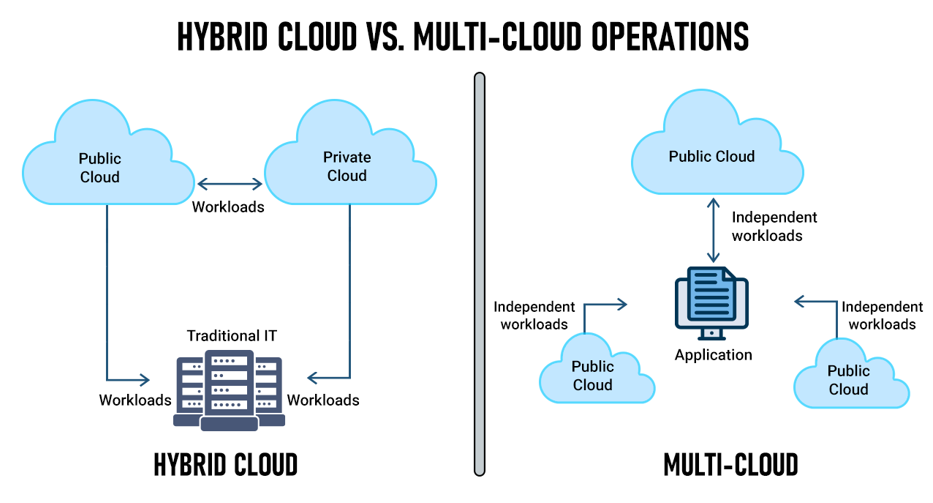
Emerging Trends in Hybrid Cloud Technology
With the advancement in technology and demand for new solutions, several trends are shaping the future of hybrid cloud computing, including;
AI Integration: AI integration with hybrid cloud, enhancing automation, resource allocation and management, and predictive analytics within hybrid cloud environments.
Edge Computing: Introducing edge computing to the cloud enables real-time data processing closer to data sources, hence reducing latency and improving performance.
Serverless Architectures: This architecture allows developers to develop applications without maintaining the underlying infrastructure.
Sustainability Initiatives: Focusing on energy-efficient infrastructure and operations to reduce environmental impact.
Industry-Specific Solutions: Creating customized hybrid cloud solutions to meet the particular requirements of various industries, like banking and healthcare.
Hybrid Cloud Security
Hybrid cloud security requires a comprehensive approach to protect data and maintain user trust. The security considerations include;
Zero Trust Security Models: Implementing strict access controls and continuous verification of users and devices.
Unified Security Policies: Implementing consistent security measures across all platforms.
Compliance Management: Following industry-specific regulations and standards.
Advanced Threat Detection: Using AI and machine learning to identify and mitigate potential security threats in real time.
Hybrid Cloud: Powering Agility, Security, and Innovation in the Cloud Era
Hybrid cloud computing stands out as a flexible and strategic solution in the rapidly evolving computing ecosystem. By fusing the advantages of public and private clouds, businesses can increase their agility, efficiency, and creativity. Adopting a hybrid cloud strategy is crucial for maintaining resilience and competitiveness in the digital era as technologies develop and business requirements become more complex and advance.
Upskill with WeCloudData: Become a Cloud Engineer & Analytics Leader
Want to become a cloud data scientist, cloud engineer, or security architect? At WeCloudData, we help professionals like you break into the tech industry with career-focused Cloud Computing & Data Programs designed by industry experts. WeCloudData, based in Toronto, offers top-rated, hybrid and self-paced programs in data and AI, blending expert mentorship with real-world projects to help learners upskill and launch tech careers.
Our Cloud Engineer Track delivers a comprehensive, hands-on approach to cloud engineering, equipping you with the skills to design, deploy, and manage secure, scalable, multi-cloud environments. The courses included in the cloud computing learning track include;
- Python Fundamentals
- Introduction to Linux
- Introduction to Docker
- AWS Fundamentals
- Azure Fundamentals
- GCP Fundamentals
Why This Program?
- End-to-End Cloud Mastery: From core principles to advanced architectures across AWS, Azure, and GCP.
- Enterprise-Grade Skills: Learn industry best practices for DevOps, resilience, and cost-optimized solutions.
- Real-World Readiness: Apply knowledge through hands-on projects and case studies mirroring modern IT challenges.
Who Should Enroll?
- Aspiring Cloud Engineers and Architects
- DevOps & SRE Professionals expanding their cloud expertise
- Tech professionals transitioning to multi-cloud environments
Visit WeCloudData to start your journey into Cloud Computing!
